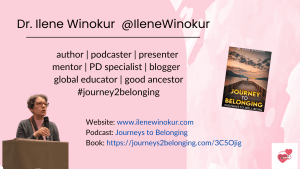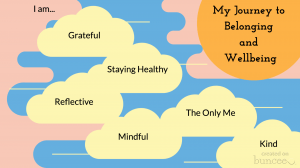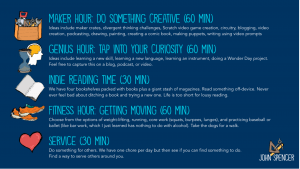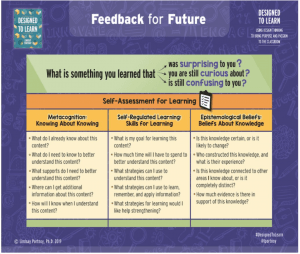It’s been a rollercoaster ride for the past few days as we watched and waited for the board members of Open AI to come up with a reason for their abrupt decision to fire Sam Altman, CEO and co-founder. However, the reason is still unclear despite our cumulative shock at how it was handled. But this isn’t the subject of my post today. My post focuses on leadership or lack thereof.
I wanted to post as soon as I heard about the news on November 17th. However, I’m glad I waited because now I can contrast the good and bad of decision-making and leadership between Altman’s previous employer, OpenAI, and Microsoft.
Here is some background for those who haven’t been following the news.
In 2015, Sam Altman co-founded OpenAI, a non-profit research organization focused on artificial general intelligence, with 10 others, including Elon Musk and Greg Brockman. Brockman became a board member, and Musk left in 2018 after a disagreement about who should run the company: Altman or Musk. OpenAI aimed to offer artificial intelligence to “all of humanity.”
The company grew and, in 2019, decided to begin using Generative Pre-trained Transformers (GPTs). GPTs are similar to a neural network or a machine learning model, which functions like a human brain and is trained on input, such as large data sets, to produce outputs, meaning answers to users’ questions. The downside is that it needs a lot of costly infrastructure and doesn’t fit a non-profit business model. So the founders decided to into two organizations: a ‘capped-profit’ organization called OpenAI Global LLC and OpenAI Inc, the non-profit and sole controlling shareholder in OpenAI Global LLC, according to an article published by the Guardian and written by John Naughton, an Irish academic, journalist and author. At that point, Altman convinced Microsoft to invest $1 billion in exchange for an agreement to license and commercialize some of OpenAI’s technology. The primary goal for Altman and Brockman was altruistic; however, several board members, including Ilya Sutskever (a co-founder and AI researcher), expressed concern about the danger of AI being used for illegal or lethal means by bad actors. Many believe this rift is the main reason Altman was fired.
Now that you have some background, we can focus on why actions in this situation exemplify poor leadership versus exemplary leadership.
Basic facts that OpenAI’s previous board members should have considered:
- Not valuing/trusting your employees/management team.
Altman had become the face of OpenAI, as evidenced by his November 6 hosting of the first OpenDev event. At the event, he announced several major enhancements for developers, including GPT 4-Turbo, an improved version of GPT-4 that can analyze text or text and images, and the ability to build GPTs and add them to a GPT store, among other innovations.
- Overlooking loyalty and team spirit
Brockman resigned from the company as a board member.
2. Poor communication
Many employees at OpenAI trust Altman, which has implications for their loyalty to a board that decided to fire him without prior notice to shareholders, employees, and Altman.
3. A lack of empathy
Microsoft, the major shareholder in OpenAI, was blindsided by the announcement. Satya Nadella, Microsoft’s CEO, was not consulted by OpenAI’s board. He was told only briefly before the Board made the public announcement.
According to David Goldman of CNN, “Involving Microsoft in the decision, informing employees, working with Altman on a dignified exit plan…all of those would have been solutions more typically employed by a board of a company OpenAI’s size – and all with potentially better outcomes.”
Employees immediately began to leave the company or threatened to leave, and investors were angry they weren’t consulted. Board members had second thoughts about their decision and considered inviting Altman back. However, Microsoft beat them to it. On November 20th, Nadella announced that Altman agreed to be CEO of a new AI research department at Microsoft. Brockman will be joining him, as well as several other OpenAI researchers. In the meantime, OpenAI announced xxxxx as interim CEO.
Microsoft announced it will remain an investor in OpenAI and provide them with cloud services. However, most OpenAI employees have threatened to leave after losing confidence in its management. Microsoft has already hired several of them.
Nadella has noted in multiple interviews and speeches that he believes there are three important concepts behind great leadership: clarity, empathy, and a growth mindset. A prime example of his beliefs is the email he wrote in January 2023 to Microsoft employees when announcing the layoff of 10,000 employees.
As reported by Forbes magazine, Nadella’s email included the following:
“The senior leadership team and I are committed that as we go through this process, we will do so in the most thoughtful and transparent way possible. First, we will align our cost structure with our revenue and where we see customer demand. Today, we are making changes that will result in the reduction of our overall workforce by 10,000 jobs through the end of FY23 Q3. [Nadella doesn’t make readers wait to learn the headline news. He brings it up front].
Second, we will continue to invest in strategic areas for our future, meaning we are allocating both our capital and talent to areas of secular growth and long-term competitiveness for the company, while divesting in other areas. [Nadella also announces the $1.2 billion charge Microsoft will take to cover severance payments].
And third, we will treat our people with dignity and respect, and act transparently. [Nadella details the “above market” severance and benefits Microsoft is committing to affected workers]”.
A high-level employee who had been laid off noted after hearing the news that “he had the opportunity to hold various positions, including launching new ad types on Bing!, supporting international customers on Azure, and launching a new language for customers in Indonesia, thereby opening up a new market. In the past two years, he had focused on diversifying Microsoft’s supply chain and reducing onboarding costs while improving efficiency.
The challenges he faced had helped him to grow both professionally and personally, and he could not express enough love and gratitude for being part of the company. When the news was announced, the immediate leadership response was not to rush the transition but to check in on everyone and ensure they were doing okay. He was heartened to see that even those who were not directly affected showered him with respect, empathy, and support.”
Contrasting Leadership Decisions
| Satya Nadella | OpenAI Board | |
| Clarity and Communication | Listening is an important skill
Bring clarity when there is uncertainty |
No communication of the decision to fire Altman to anyone
Infighting among board members about the direction of OpenAI |
| Teamwork and Empathy | Empathy is key to innovation
Collaboration is key for companies to thrive |
Lack of awareness of employee loyalty to Altman and his vision
Worries that profits would override ethics and safety |
| Growth-mindset | A culture of learning from mistakes
Risk-taking while being mindful of what lies ahead |
Fears of OpenAI’s rapid growth
Risk-aversion |
By contrasting the management of the same situation, we can see which one was more effective. In addition, the relationship Altman and Nadella have forged is key to whether it will end successfully or not.
Sam Altman posted on X (formerly Twitter) on November 20:
satya and my top priority remains to ensure openai continues to thrive
we are committed to fully providing continuity of operations to our partners and customers the openai/microsoft partnership makes this very doable
The essence of effective leadership is evident in how it all turned out (within an extremely short timeline of 5 days).
Update as announced on X on November 22, 2023
OpenAI: (@OpenAI)
“We have reached an agreement in principle for Sam Altman to return to OpenAI as CEO with a new initial board of Bret Taylor (Chair), Larry Summers, and Adam D’Angelo.
We are collaborating to figure out the details. Thank you so much for your patience through this.”
Sam Altman: (@sama)
“i love openai, and everything i’ve done over the past few days has been in service of keeping this team and its mission together. when i decided to join msft on sun evening, it was clear that was the best path for me and the team. with the new board and w satya’s support, i’m looking forward to returning to openai, and building on our strong partnership with msft.”
Satya Nadella: (@satyanadella)
“We are encouraged by the changes to the OpenAI board. We believe this is the first essential step toward more stable, well-informed, and effective governance. Sam, Greg, and I have talked and agreed they have a key role to play along with the OAI leadership team in ensuring OAI continues to thrive and build on its mission. We look forward to building on our strong partnership and delivering the value of this next generation of AI to our customers and partners.”
This story was evolving as I wrote this post. I think you can see the result has satisfied everyone. Based on reporting by CNBC, I believe that Altman and Nadella were involved in all aspects of this solution.
Clarity through Communication. Empathy. Growth mindset.
More information in this Wakelet collection





















